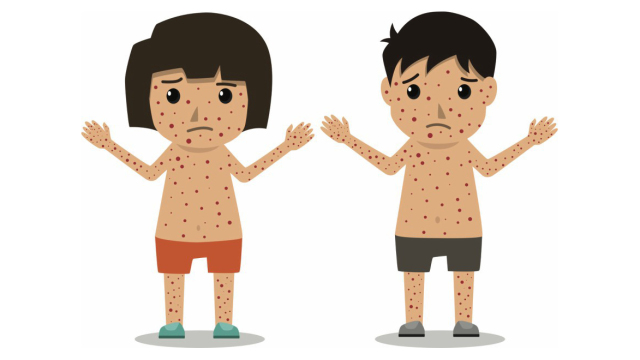Measles is a highly contagious infectious disease caused by the measles virus. Symptoms usually develop 10–12 days after exposure to an infected person and last 7–10 days. Initial symptoms typically include fever, often greater than 40 °C (104 °F), cough, runny nose, and inflamed eyes. Small white spots known as Koplik's spots may form inside the mouth two or three days after the start of symptoms. A red, flat rash which usually starts on the face and then spreads to the rest of the body typically begins three to five days after the start of symptoms. Common complications include diarrhea (in 8% of cases), middle ear infection (7%), and pneumonia (6%). These occur in part due to measles-induced immunosuppression. Less commonly seizures, blindness, or inflammation of the brain may occur. Other names include morbilli, rubeola, red measles, and English measles. Both rubella, also known as "German measles", and roseola are different diseases caused by unrelated viruses.
Measles is an airborne disease which spreads easily through the coughs and sneezes of infected people. It may also be spread through direct contact with mouth or nasal secretions. It is extremely contagious–nine out of ten people who are not immune and share living space with an infected person will be infected. People are infectious to others from four days before to four days after the start of the rash. Most people do not get the disease more than once. Testing for the measles virus in suspected cases is important for public health efforts.

